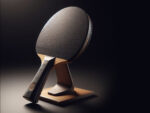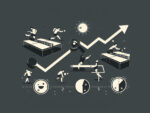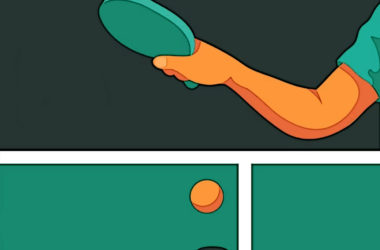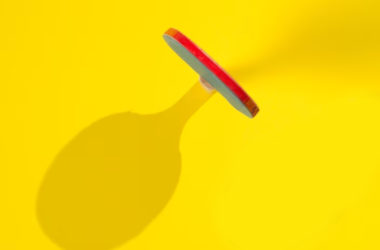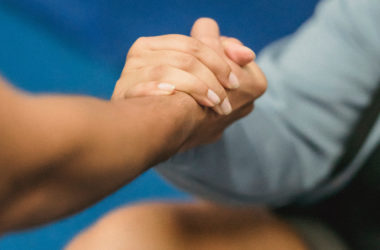

Mastering Table Tennis Serve Combinations
Table tennis is a fascinating sport, known for its speed and precision. At the heart of this game is service, an essential component that often determines the progress of an exchange. Table tennis players are distinguished not only by their skill in hitting the ball, but also by their ability to create effective serve combinations. These combinations are strategic and calculated, aiming to destabilize the opponent and gain the upper hand in a match.
In this article, we will explore five particularly effective serve combinations in table tennis. We will also highlight the tactical advantages they offer players. Each of these combinations is a true art, revealing the ingenuity and subtlety necessary to excel in this demanding sport. By understanding these five strategies, players are better prepared to dominate the table. This will allow them to take control of the rally, a key element to success in competitive table tennis.
1. The Short Cut Serve Followed by a Fast Long Serve
One of the crucial aspects of table tennis is the ability to dictate the pace of the rally from the first stroke of the racket. Indeed, the service, starting from each point, offers players the opportunity to take the initiative. It also allows you to unsettle your opponent and gain points effectively. Among the many combinations of services that exist, that of “short cut service followed by a quick long service” is one of the most strategic and effective. It is often used by advanced players to gain a tactical advantage early in a match.
Short service cut
The short cut serve is an opening shot commonly used by high-level players. It involves a low trajectory and backspin, usually accompanied by a slight wrist action. The goal of this serve is to have the ball hit the table just above the net. Then it must bounce very close to the baseline on the opposing side. As a result, the opponent is forced to approach the table to reach the ball. This reduces the time he has to react.
The short cut serve has several advantages. First, it limits the opponent’s room to maneuver by forcing them closer to the table. In addition, the backward rotation of the ball makes it difficult for the opponent to predict its trajectory. This increases the chances of causing an unforced error or a weak return. In addition, this service creates an opportunity for the serving player to take the initiative upon return of service. He can then anticipate the opponent’s return.
Fast long service
After applying pressure with a short cut serve, the serving player can then choose to follow with a quick long serve. This service is characterized by a low, fast and ineffective trajectory. The objective is to surprise the opponent, who can expect a short serve after the initial serve. The ball travels quickly and can be difficult to catch. This is because the opponent has already started to adjust to a closer distance from the table.
The fast long serve is particularly effective because it forces the opponent to react quickly, without having time to prepare properly. Opposing players can be caught off guard, often returning too high, too long, or poorly controlled. This gives the serving player the opportunity to take the initiative in the rally by attacking the ball offensively.
By combining the short cut serve followed by a fast long serve, table tennis players can create a formidable sequence. This sequence disrupts the opponent. This forces him to quickly adjust his position and timing. But it also gives the serving player the opportunity to take control of the point. This first combination is a perfect example of how table tennis requires tactical thinking and technical mastery to gain the upper hand in a match.
2. Table Tennis Serve Combinations: Short Lift Serve and Long Cut Serve
In table tennis, the variety of services is a real weapon. Indeed, this favors players who seek to gain a tactical advantage over their opponents. Thus, the combination of “short lift serve followed by a cut long serve” is one of those secret weapons often used by advanced players to destabilize their competitors. This sequence of services combines the strength of the topspin with the subtlety of the cut serve to create an effective strategy.
Short lift serve
The topspin short serve is a tactic that involves giving the ball topspin, causing it to bounce off the table on the opponent’s side of the court. This serve aims to create an upward trajectory and backspin on the ball. It forces the opponent to move away from the table to take the ball. This action has a double advantage: first, it limits the opponent’s reaction time. Then, it forces him to adjust his positioning, thus creating an opportunity for the server player.
The topspin of the short serve creates a ball that bounces high on the opponent’s table. This can make it difficult for the opponent to control the ball properly. Opposing players are often forced to play defense, making weaker and less offensive returns.
Long service cut
After establishing momentum with the short topspin serve, the serving player can choose to follow with a long cut serve. The long cut serve is characterized by a ball bouncing low on the table. Its rapid trajectory seems to stop abruptly upon contact with the table. Unlike the short topspin serve, this serve does not add spin to the ball. This then makes it difficult for the opponent to predict the trajectory of the ball.
The cut effect of the long serve can deceive the opponent, because it is unexpected after the previous short topspin serve. Opposing players may react by anticipating a topspin serve, but often find themselves making errors due to the sudden change in ball trajectory.
By combining the short topspin serve followed by a long cut serve, table tennis players can exploit their opponents’ weaknesses. This combination creates a dynamic sequence of serves, forcing the opponent to quickly adapt to varied trajectories. This gives the serving player the opportunity to take the initiative and dictate the pace of the rally, a major advantage in table tennis. This second combination demonstrates the tactical complexity and technical finesse required to excel in this demanding sport.
3. The Hammer Serve Followed by a Slice Serve
Among the effective service combinations, that of the “hammer serve followed by a slice serve” stands out for its potential to deceive and destabilize the opponent. This sequence of services combines the power of the hammer serve with the lateral rotation of the slice serve to create a winning strategy.
Hammer serve
The hammer serve is a powerful serve, often used to surprise the opponent. It is characterized by a fast trajectory and a ball that quickly dives onto the table on the opposing side. The objective of this serve is to force the opponent to react quickly, because the ball arrives quickly with a low trajectory. The name “hammer” comes from the action of the server’s arm, which comes down sharply to hit the ball.
The hammer serve has the advantage of taking the opponent by surprise, forcing them to react quickly to control the ball. This can lead to opponent errors, including returns too high or returns out of range. Opposing players have difficulty anticipating the trajectory of the ball, which gives the server an advantage from the start of the rally.
Sliced service
After imposing pressure with the hammer serve, the serving player can then opt for a slice serve. The slice serve is characterized by a lateral rotation of the ball. The latter turns the ball on its vertical axis. The ball tends to slide on the table, creating a trajectory that is difficult for the opponent to anticipate. This variation can destabilize the opponent. Indeed, he must quickly adjust to the rotation and changing trajectory of the ball.
The sliced ball is difficult for the opponent to control, as it can bounce unexpectedly and make subtle changes in direction. Opposing players have difficulty predicting where the ball will land. This can lead to errors and poorly controlled balls.
By combining the hammer serve followed by a slice serve, table tennis players can create a powerful and deceptive sequence of serves. This combination forces the opponent to quickly adjust to the variation in ball trajectory, while allowing the serving player to maintain pressure. Cela témoigne de la nécessité d’innovation tactique et de maîtrise technique pour exceller dans le tennis de table.
4. Table Tennis Serve Combinations: Short Side Serve Followed by Long Serve
The combination of “short side serve followed by long serve” is a strategy that allows players to create tricky situations for their opponents, forcing them to adapt quickly. This sequence of services combines the lateral trajectory of the short serve with the offensive potential of the long serve to confer a tactical advantage to the serving player.
Short side serve
The short side serve is a tactic that involves giving the ball a lateral trajectory, causing it to bounce off the side of the table on the opponent’s side. This serve is designed to deceive the opponent by changing the direction of the ball. Depending on the direction of the side serve (right or left), the player can force the opponent to move quickly from side to side to reach the ball. The lateral trajectory of the ball makes it difficult to anticipate and control.
The short side serve forces the opponent to quickly adapt to the variation in ball trajectory. Opposing players must move laterally to reach the ball, which can lead to positional errors and untimely returns.
Long serve
After imposing pressure with the short side serve, the serving player can then choose to follow with a long serve. The long serve is characterized by a faster and less curved trajectory, allowing the ball to bounce deeper on the table on the opponent’s side. Unlike the short serve, the long serve requires the opponent to move quickly toward the back of the table to reach the ball, thereby stretching their positioning.
The long serve offers the serving player the opportunity to take the initiative in the rally, as he can anticipate the opponent’s return and engage in an offensive strike. This sequence creates an opportunity to score points quickly, as the opponent must adjust quickly to reach the ball.
By combining the short side serve followed by a long serve, table tennis players can keep pressure on the opponent by forcing them to move sideways and then toward the back of the table. This combination creates a complex dynamic, forcing the adversary to constantly adapt to varied trajectories. This highlights the importance of tactical variation and technical mastery to excel in table tennis.
5. The No Effect Service Followed by a Lifted Service
The combination of “no spin serve followed by a topspin serve” is a clever approach. Indeed, this approach plays on the contrast between two types of services to surprise the opponent.
Service without effect
The no-spin serve, also called a neutral serve, is designed to create a predictable, spin-free ball trajectory. The serving player hits the ball so that it neither spins forward nor backward. This makes the trajectory of the ball more regular and easy to anticipate. In a word, the objective of this serve is to create a feeling of confidence in the opponent, who can expect a ball without surprises.
The no-spin serve is often used to throw the opponent off guard, by forcing him to anticipate simple trajectories, but it is also used to prepare a specific reaction. By making the ball less unpredictable, the serving player can anticipate the opponent’s return. He can therefore position himself strategically for the next shot.
Lifted service
After having established a dynamic of confidence in the opponent with the no-spin serve, the serving player can choose to follow with a topspin serve. The topspin service consists of hitting the ball in such a way that it spins forward. This serve has the effect of lifting the ball quickly after bouncing on the table. This can take the opponent by surprise, as he was expecting a serve with no effect. The topspin ball is more difficult to anticipate and control. This can therefore lead to errors on the part of the opponent.
The topspin serve is often used to provoke higher returns from the opponent. This then gives the server player the opportunity to attack and score points quickly.
By combining the no-spin serve followed by a topspin serve, table tennis players can exploit the opponent’s momentary confidence to surprise them with unexpected ball trajectory and spin. This combination illustrates the tactical subtlety and technical mastery needed to gain an advantage in this demanding sport. It also demonstrates the importance of game psychology and the ability to manipulate the opponent’s expectations to gain a strategic advantage.
The Art of Table Tennis Serve Combinations: A Key to Excellence
Table tennis is a demanding sport. It requires exceptional technical mastery, a deep understanding of tactics and great mental agility. Among the many skills needed to excel in this game, effective serve combinations are a secret weapon that allows players to gain a strategic advantage from the start of each rally.
To conclude on the combinations of Table Tennis Services
During this exploration of “5 Effective Serve Combinations in Table Tennis”, we discovered how these service sequences can be used to deceive, destabilize and dominate opponents. Each combination has its unique characteristics, creating specific tactical opportunities for the serving player.
Some combinations
The “short cut serve followed by a quick long serve” helps dictate the pace of the game by forcing the opponent to adapt quickly. Then, the “short topspin serve followed by a long cut serve” offers a balance between power and subtlety, forcing the opponent to make difficult choices. In addition, the “hammer serve followed by a slice serve” combines power and rotation to create complex situations for the opponent. The “short side serve followed by a long serve” imposes a variety of movements on the opponent, forcing them to constantly adjust. Finally, the “no-spin serve followed by a topspin serve” exploits the opponent’s psychology to take him by surprise.
Combinations of services in table tennis, for a strategic game
These combinations illustrate the richness of table tennis as a strategic sport, where creativity and tactical innovation are encouraged. The most accomplished players know how to use these serve sequences. They thus manage to maintain pressure on their opponents. They can then anticipate reactions and gain a valuable advantage in each exchange.
Ultimately, table tennis is much more than just an exchange of fast balls. It’s a complex ballet of technical and strategic skills that intertwine to create an exciting and dynamic game. Effective service combinations are one of the key elements of this ballet. They allow players to compose a symphony of tactics and precision on the table tennis table. By mastering them, players can hope to reach the top of this demanding and exciting sport.
Featured image : picture by Mamba Blades “The 5 Serve Combinations in Table Tennis“


